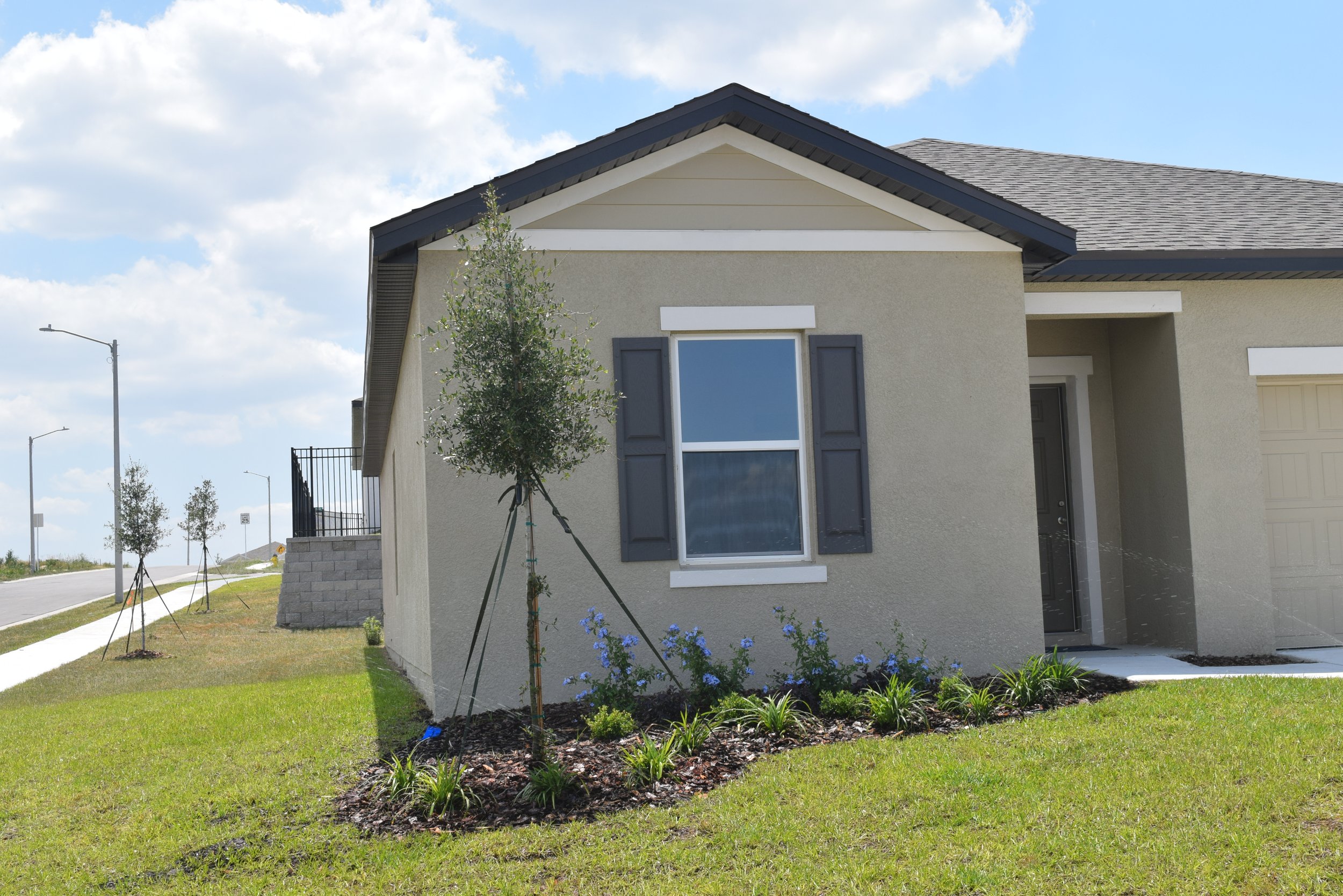To sit in the shade on a fine day and look upon verdure is the most perfect refreshment.
~ Jane Austen
“Mansfield Park”, 1814, p. 85
Our spring has been rough. Summertime temperatures teasingly near the 90’s with nary a drop of rainfall last month. Usually in April, Central Florida receives 3.78 inches of rain, but last month, Orlando only received .37 inches. Since the beginning of 2025, our rainfall is down 7 inches for the year. Fortunately, this month, in the first two weeks of May, we should catch up with the rainfall. We can hope for 6” to 7” just this week.
What does drought stress look like in the landscape?
Drought stressed blueberries, podocarpus, and viburnum.
So what should you do if you find your shrubs?
Handwater your plants on the days you cannot irrigate. Make sure you saturate rootball.
Make sure irrigation system is hitting the base of the plant. Remember its the rootball that needs water, not the leaves.
Hold off on fertilizing till rains arrive.
Cut the brown fronds or foliage out.
Do not spray pesticides.
Two ways to help prevent drought-stress in Spring and WInter:
Right Plant, Right Place based on your soil conditions, either xeric, mesic, or hydric soils.
Add organic amendments to your soil. One bag of topsoil or compost, one bag of peat, and one bag of manure for every 10 square feet of area.
Here is a great chart for building healthy Soil with organic amendments:
Find out how to have a great landscape in May, despite the heat and lack of rain. Check it out!
In April, our Art in Bloom Garden Tour traveled to Savannah, Georgia, and Charleston, South Carolina. We visited hidden gardens in Savannah, toured historic homes and plantations, learned how to propagate beautiful irises, and enjoyed a delicious cooking lesson of classic Southern cuisine, and dining in style with a night dinner cruise! Don’t miss another garden adventure. Go to Art in Bloom Garden Tours! Tony and I would love to have you join us!
Lizzie’s showing off her amaryllis and warns about being a jive turkey! Her life experience with a bird in the hand and two in the bushes is real. Lizzie talks turkey in her post this month.
Savannah and Charleston have beautiful, shade-tolerant pocket gardens in nearly every landscape. They use dwarf mondo grass as turf, Confederate jasmine on wrought iron fences, and this fun ornamental plant survives Zone 7 winters, and Zone 11 hot temperatures. My Plant of the Month also has yellow Asteraceae flowers. In the shade! Find out what it is and try it! Its architectural foliage is perfect for elegant, whimsical, or classic gardens.
When I go to the theme parks, I admire their instant landscapes that provide that ‘Wow’ factor around every corner. The designs, plant selections, and colors are inspiring. But usually, the theme park attraction landscapes are used as seasonal plantings and expensive. They are designed to be short-term, and believe me; we pay for it in every ticket. City and county landscapes on the other hand, should be examples of sustainable landscapes. My Landscape Malpractice this month was beautiful but not sustainable or cheap, and the location was on a rarely used avenue. It will be interesting to watch it over the next year and see how these new hybrid perennials will do.
My design tip this month is a creative exercise for a landscape that has great bones and potential. Let me know what you would do with an empty slate landscape with a beautiful fountain.
Happy Mother’s Day to all the women who are Moms! Moms with children, Stepmoms, Moms of fur babies and reptiles, Frat Moms, and teachers who serve as Moms in the classroom. My Mom loved roses. Our family consisted of six children in nine years, so she was running from morning till night. She only had one rose bush at a time. But it was always a beautiful rose when it bloomed. Great memories.
If you don’t want to get up early to listen to Better Lawns and Gardens, you can always listen to our podcast here.
Take it easy this month in the landscape, try not to stress out your lawn with excessive chemical treatments. The rainy season will be here shortly.




























